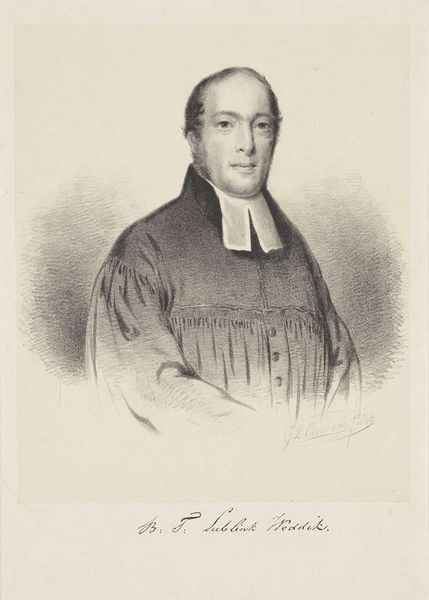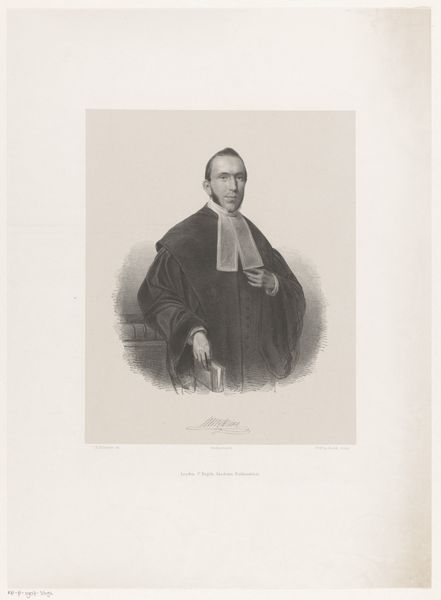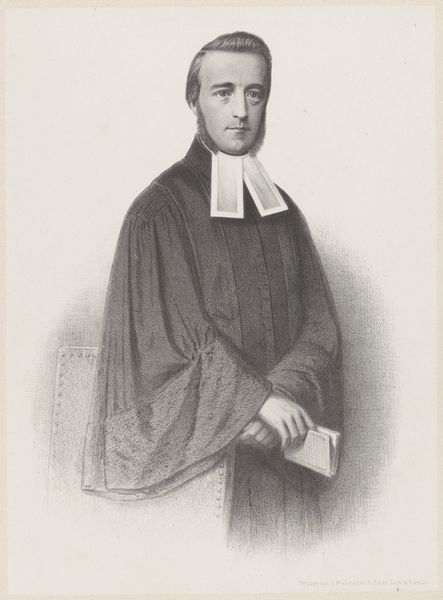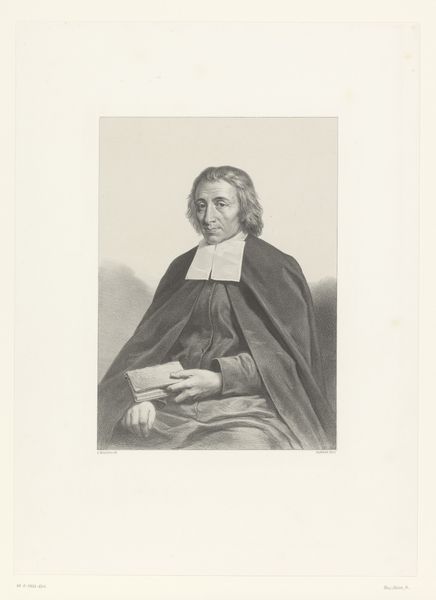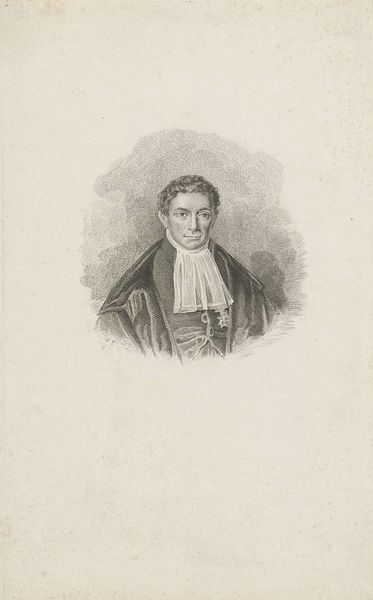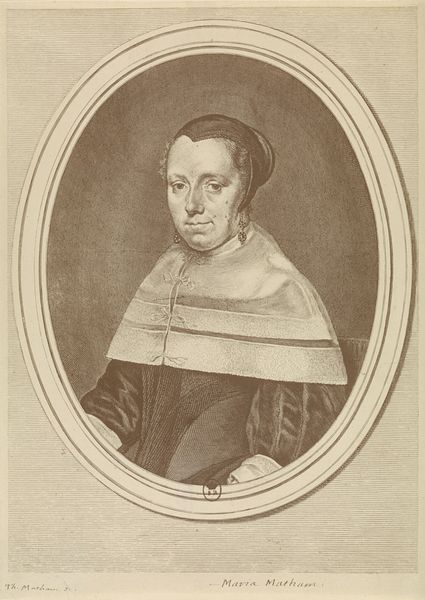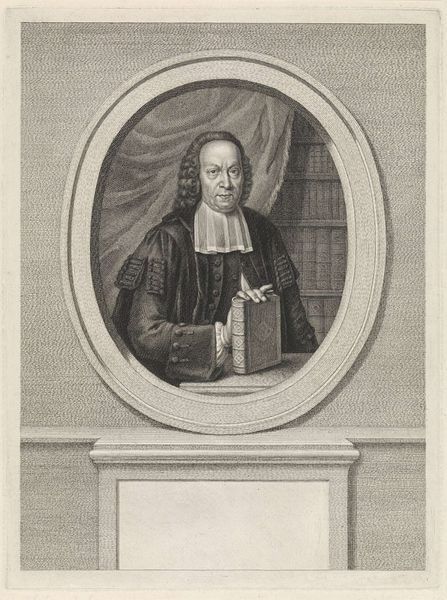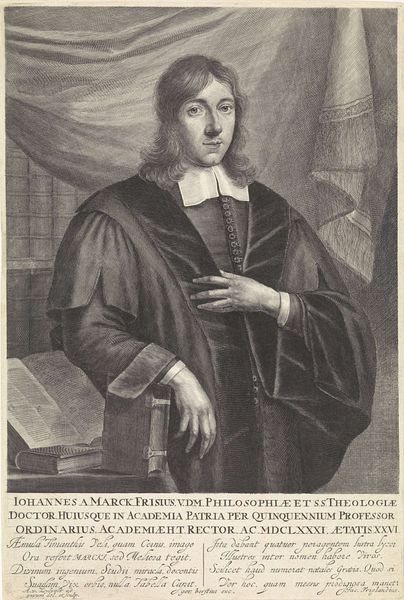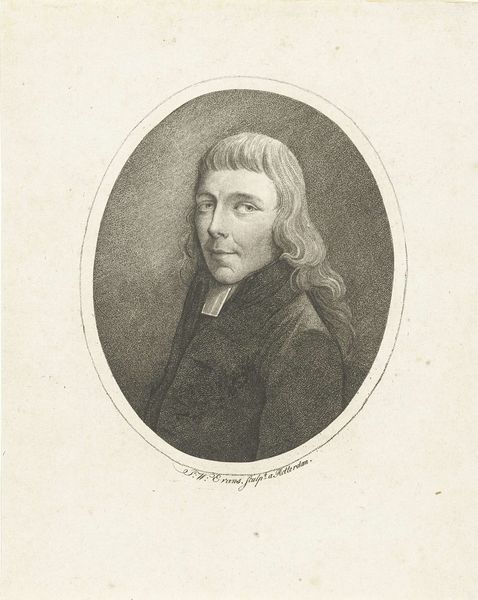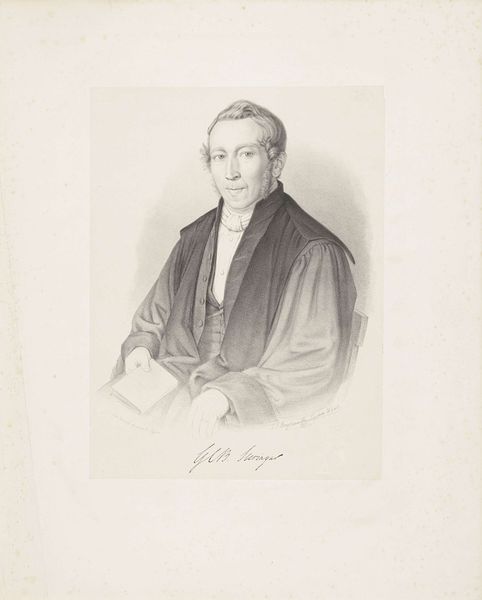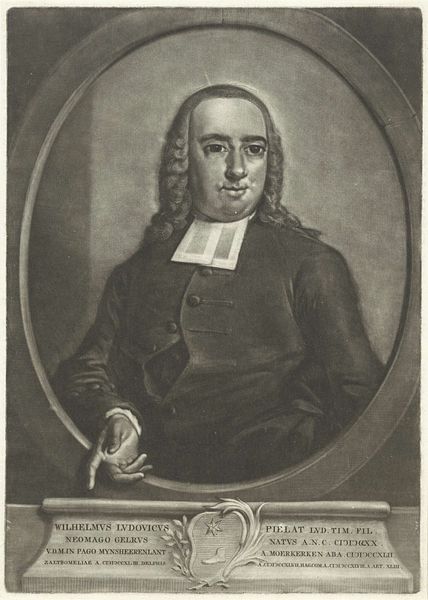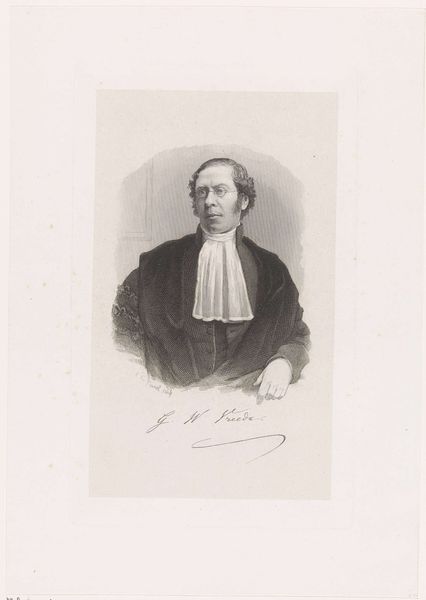
drawing, print, etching, graphite, engraving
#
portrait
#
drawing
# print
#
etching
#
pencil drawing
#
graphite
#
portrait drawing
#
academic-art
#
graphite
#
engraving
#
realism
Dimensions: height 457 mm, width 325 mm
Copyright: Rijks Museum: Open Domain
Curator: Looking at this image, I feel an immediate sense of restrained seriousness. The composition is classical, almost austere. Editor: You’re picking up on its gravitas. This is a print from 1858, titled "Portret van een onbekende man," created by Sybrand Altmann. It's an etching, a testament to the graphic arts of the period. Curator: Etching...so we are seeing the traces of acid, biting into the metal plate that transferred the image. I'm interested in the texture, the linework. The detail in his face suggests an attention to realism but it looks somehow manufactured. A portrait created with a reproducible process seems to democratize portraiture, placing it within reach of a wider market and broader consumption. Who was commissioning these? What were the costs? Editor: The attire and the book he holds are symbolic—hints toward intellect, authority, perhaps piety. White clerical bands suggest that he is some type of preacher. He projects learnedness and probably status, a kind of public figure perhaps? Altmann's technical skill is apparent, using line and tone to model form. I see some melancholy in his eyes. He seems lost in thought. The symbolism is potent, reflecting ideals of mid-19th century masculinity. Curator: It makes me think about labor. Each etched line required meticulous handwork and planning before ever touching paper. How does labor alter the symbolism, perhaps imbuing it with the artist’s investment rather than solely representing that of the sitter? The commercial intent complicates this further – this wasn't simply an artistic study, it was a product. And did Altmann’s labor challenge art hierarchy – elevating craft through detail and making portraiture a form available for many, moving away from exclusive oils? Editor: That tension between labor and symbol, material and meaning, it's something compelling. For me, the image prompts thinking on how such portraiture, intended for broad consumption, simultaneously served to reinforce certain archetypes and communicate social norms and how they perpetuate across generations. Curator: Yes, how it becomes embedded in the very fabric of visual culture through accessible printing. I hadn't considered the portrait in this way. It's more intricate when analyzed together. Editor: Agreed. Together, this really shows me how historical and social values become visualized, printed, consumed and then reiterated across eras through the artwork itself.
Comments
No comments
Be the first to comment and join the conversation on the ultimate creative platform.
